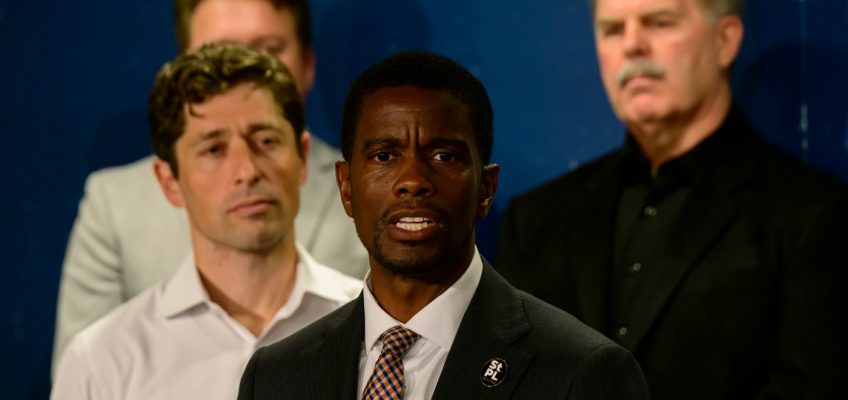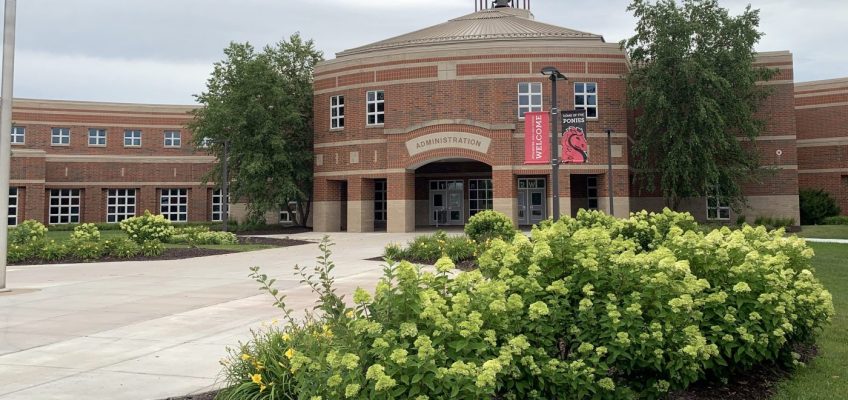St. Paul Mayor Melvin Carter and leaders of other metro-area cities are calling for the Minnesota Legislature to allow them to create local gun control laws if state lawmakers can’t reach an agreement on new policies.
Gov. Tim Walz has said he plans to call a special session to address gun policy after the shooting last week at Annunciation Catholic Church in Minneapolis that killed two young children and injured 18 others.
Walz and Democratic-Farmer-Labor lawmakers want new restrictions on firearms, but they’ll have to get Republican support to pass bills like a ban on certain semiautomatic rifles and limiting the capacity of magazines. And, that appears unlikely.
Gov. Tim Walz. (Jose. F. Moreno / The Philadelphia Inquirer/TNS)
Recognizing that political reality, Carter, Minneapolis Mayor Jacob Frey, and leaders of seven other cities gathered Tuesday at the Minnesota Capitol to ask state leaders to repeal a 1985 state law preventing local governments from enacting their own gun control.
“We have an emergency and we are simply asking our legislature to do what every 8-year-old in that school knew to do last week: Take action,” said Carter, noting along with other mayors that he would prefer a federal or state ban to local action.
“If you’re not able to do it or willing to do it there, give us the ability to keep our constituents safe,” Frey said. “That is our call. That is our ask.”
Chances at Legislature?
Leaders from Bloomington, Stillwater, Vadnais Heights, Minnetonka, Hopkins and Richfield joined Carter and Frey on Tuesday in pushing for the repeal of the decades-old preemption law.
It’s unclear if they’ll have any success, as House and Senate Republicans have shown few signs of interest in changing gun laws.
The House is currently split 67-66 with Republicans at a one-seat advantage.
That likely will return to a 67-67 tie after a special election for former DFL House Speaker Melissa Hortman’s seat on Sept. 16.
No matter the outcome of that election, House DFLers will still need GOP votes to pass any bills.
On the Senate side, DFLers have 33 seats to Republicans’ 32 seats. Two special elections this November could change the balance of power or preserve the DFL’s one-seat majority. But right now, they still need 34 votes to pass any bills.
If all 33 DFL senators voted for an assault weapons ban or any other gun control legislation, they’d need one Republican to join them.
Surrounded by fellow metro mayors Minneapolis Mayor Jacob Fry speaks to the media during a press conference at the State Capitol Building in St. Paul on Tuesday, Sept. 2, 2025. (John Autey / Pioneer Press)
Complicating matters
Further complicating matters for the Senate DFL is that at least one northern rural senator could be a holdout on gun bills. Rural district holdouts limited gun control legislation when the DFL had full control of state government in 2023 and 2024.
Sen. Grant Hauschild, who represents northeast Minnesota’s Arrowhead region, has voted for measures like extreme risk protection orders and universal background checks.
But he opposed a requirement to lock up guns and another bill that would require the reporting of stolen or lost guns in a timely manner.
Republican House Speaker Lisa Demuth, R-Cold Spring, said last week’s news of Walz considering a special session had initially come as a surprise.
House Speaker Lisa Demuth (Courtesy photo)
In a Monday statement, the speaker said she had a conversation with Walz about his goals and noted that any proposals that come through the Legislature will need bipartisan support.
“If Governor Walz and Democrats are focused on partisan accusations and demands, this special session will not be productive for the people of Minnesota,” Demuth said.
Some Republicans have already signaled opposition to lifting the state preemption.
House Safety Committee Lead Paul Novotny, R-Elk River, said the law prevents a “confusing local patchwork of local rules” that would turn “law-abiding citizens into criminals simply for crossing a city or county line.”
“The Second Amendment does not change depending on your zip code, and every law-abiding Minnesotan deserves the same right to protect themselves and their family no matter what city or county they are currently in,” he said in a statement. “Constitutional freedoms shall not be infringed by a county or city government, and I trust the courts would agree.”
Local laws?
City leaders didn’t get into specifics on how local bans might take shape, though they shared a general idea of what they wanted.
Mayors called for an overall ban on the sale and possession of “assault style weapons,” which would include the AR-15 — a semiautomatic rifles with features like pistol grips and detachable magazines. Frey said magazine capacity would be limited to 10 bullets.
Minneapolis and St. Paul don’t have any stores that sell guns, so local bans in those cities would mainly affect people who already own semiautomatic rifles and larger magazines.
Asked if there would be anything that could stop someone from buying a gun in one municipality and bringing it to another, Minnetonka Mayor Brad Wiersum, whose city has a gun retailer, said doing nothing at all to regulate weapons would be a bigger cause for concern.
“If you take away opportunities to get guns, there will be fewer guns used,” he said. “Does it solve the problem? It does not. But does it reduce the problem? Does it mitigate the problem? Yes, it does.”
Recent setbacks for gun control advocates
A renewed push for gun restrictions comes amid recent setbacks for gun control advocates in Minnesota.
The Minnesota Gun Owners Caucus, a prominent state gun rights group, has successfully challenged multiple Minnesota gun laws.
In August, a Ramsey County Judge struck down a state law banning binary triggers — a modification that allows a semiautomatic weapon to fire both when the trigger is pulled and released, greatly increasing its rate of fire.
Judge Leonardo Castro said it couldn’t stand because DFL lawmakers inserted the ban into a 1,400-page bill in the final hours of the 2024 legislative session, violating the Minnesota Constitution’s Single Subject and Title Clause.
In another August ruling, the Minnesota Supreme Court said a decades-old law banning certain guns without serial numbers didn’t apply to homemade “ghost guns” as long as federal law doesn’t require a serial number.
And, earlier this year, Minnesota’s minimum age to obtain a permit to carry a firearm dropped from 21 to 18 after the U.S. Supreme Court declined to take up the state’s appeal in a case challenging the minimum age.
Related Articles
MN Capitol rally calls on lawmakers to ban assault rifles
Gov. Tim Walz plans special session on guns after Catholic school shooting
Molly Coleman is seated on the St. Paul City Council
Hemmingsen-Jaeger wins DFL primary for Nicole Mitchell seat in Woodbury
Stillwater lands 2026 MN Governor’s Fishing Opener




